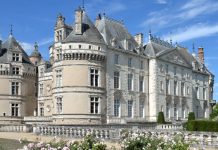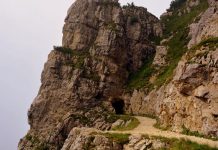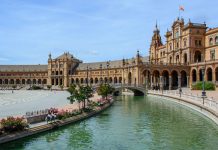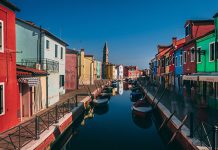In the region of Puglia in Italy one will find a very exceptional town called Alberobello. It is peculiar and interesting due to its strange houses. Here is the story of how this strange town has appeared…

Photo: pululante, https://www.flickr.com/photos/pululante/15660039092/ (https://creativecommons.org/licenses/by/2.0/)
People all over the world do their best to avoid paying taxes. It all started not nowadays: different tricks existed even long time ago.
In XVI century the Count of Conversano has brought peasants to Itria Valley to cultivate his land. But people needed houses to live in. In its turn, for building a house a tax should have been paid to the Kingdom of Naples.

Photo: pululante, https://www.flickr.com/photos/pululante/15473064348/ (https://creativecommons.org/licenses/by/2.0/)

Photo: pululante, https://www.flickr.com/photos/pululante/15039089023/ (https://creativecommons.org/licenses/by/2.0/)

Photo: andresumida, https://www.flickr.com/photos/atsumida/34782897823/ (https://creativecommons.org/licenses/by/2.0/)
In order o avoid paying taxes people started to build limestone houses without attaching the blocks with cement mortar. The locals were warned in advance about the arrival of tax collectors, so these houses were easily dismantled. The secret is simple: no house — no tax! This is the way Alberobello town appeared. The houses are called trulli. People kept installing and dismantling them up to the end of XVIII century. By that time the King Ferdinand IV of Bourbon has annexed the town to his kingdom and has cancelled the payment of this tax.

Photo: aderchen, https://www.flickr.com/photos/ader1972/32213583483/ (https://creativecommons.org/licenses/by-nd/2.0/)

Photo: Eduard Marmet, https://www.flickr.com/photos/143134673@N07/33920022376/ (https://creativecommons.org/licenses/by-sa/2.0/)

Photo: Stefano Avolio, https://www.flickr.com/photos/savolio/20277363883/ (https://creativecommons.org/licenses/by-sa/2.0/)
Trulli were built up to the beginning of XX century. They are usually round in shape and roofs are made of stones. Legend says, it was enough to remove one single stone from the roof and the house would be destroyed immediately.

Photo: N i c o l a, https://www.flickr.com/photos/15216811@N06/35953601861/ (https://creativecommons.org/licenses/by/2.0/)

Photo: Patrizia Peruzzini, https://www.flickr.com/photos/fiordifelce/34256032492/ (https://creativecommons.org/licenses/by/2.0/)

Photo: aderchen, https://www.flickr.com/photos/ader1972/32183350524/ (https://creativecommons.org/licenses/by-nd/2.0/)
These unusual houses, built without any mortar, have perfectly remained the same throughout the centuries. In 1996 trulli obtained their honorable place in UNESCO World Heritage List.

Photo: Francesca Cappa, https://www.flickr.com/photos/phalaenopsisaphrodite523/9667577364/ (https://creativecommons.org/licenses/by/2.0/)

Photo: Patrizia Peruzzini, https://www.flickr.com/photos/fiordifelce/33808031131/ (https://creativecommons.org/licenses/by/2.0/)

Photo: CucombreLibre, https://www.flickr.com/photos/33200530@N04/8204633182/ (https://creativecommons.org/licenses/by/2.0/)
In Alberobello trulli are used as museums, souvenir shops and restaurants. Moreover, people still live in some of them! In many houses the interiors of XVIII century still look perfect.

Photo: Güldem Üstün, https://www.flickr.com/photos/guldem/30758102755/ (https://creativecommons.org/licenses/by/2.0/)

Photo: Patrizia Peruzzini, https://www.flickr.com/photos/fiordifelce/33938222405/ (https://creativecommons.org/licenses/by/2.0/)

Photo: aderchen, https://www.flickr.com/photos/ader1972/32646455870/ (https://creativecommons.org/licenses/by-nd/2.0/)






























